Most people dream of seeing the Northern lights at least once in their lives, and for many, it turned into a reality this weekend. Although the aurora is commonly seen between certain latitudes, this time, due to a massive solar storm, it appeared in the most unusual places around the world.
People couldn’t believe their eyes as they took in the magnificent colors lighting up the sky. But, not everyone was pleased about this celestial event. The folks who missed out turned to memes to cope with their feelings.
#1

Image credits: forrrestgreen
#2
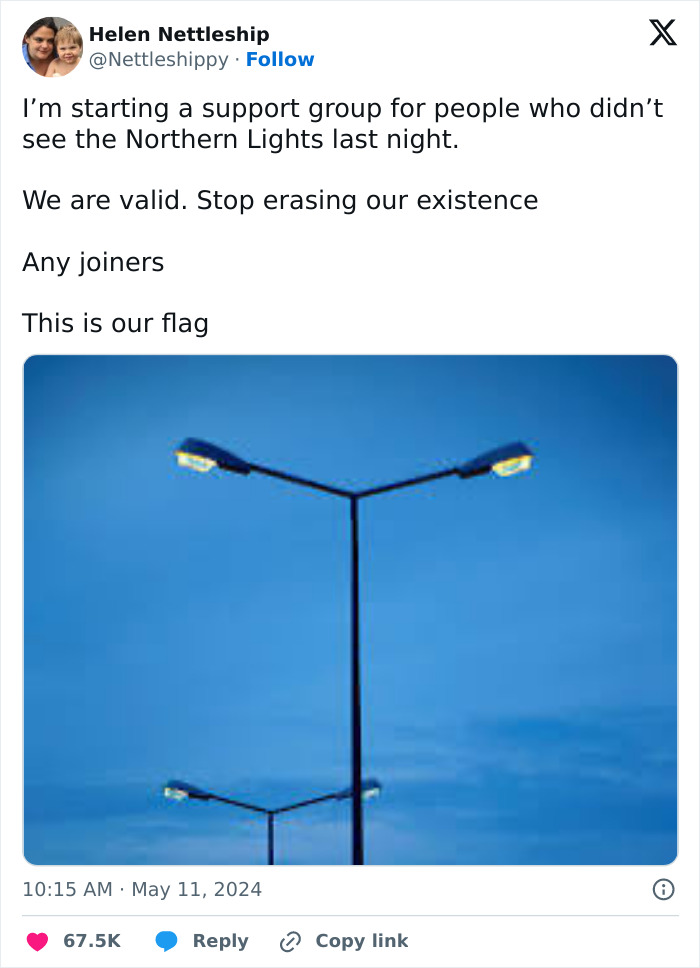
Image credits: Nettleshippy
#3

Image credits: listenupnerds
The amazing phenomenon of the unusual Northern lights comes right after the solar eclipse that happened in April of this year. The rare aurora event captivated people everywhere (even the ones who didn’t get to witness it). NASA chimed in to explain how exactly this aurora took place. They stated that it was because of coronal mass ejections (CMEs).
CMEs are giant clouds of solar particles that escape from the Sun and are laced with plasma and magnetic fields. They can take hours or several days to reach the Earth, and when they do, they can set the aurora alight. This happens because the particles strike the gases present in the Earth’s atmosphere and heat them up, causing them to start glowing.
#4
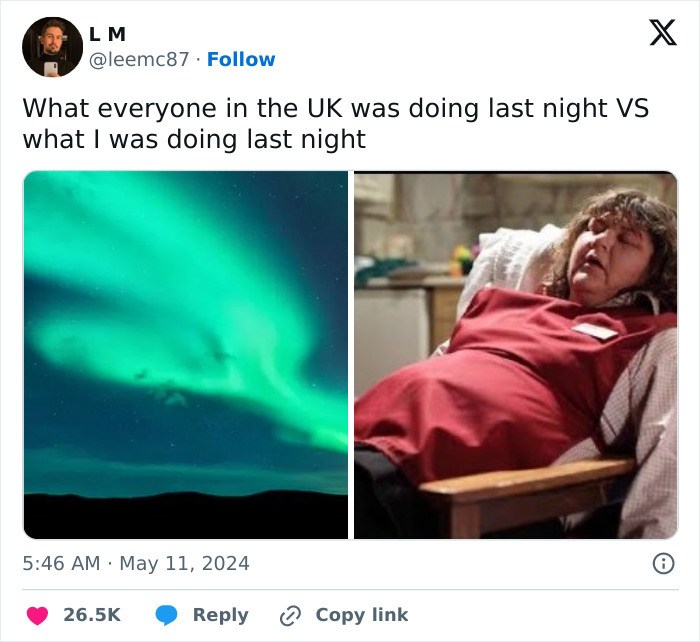
Image credits: leemc87
#5
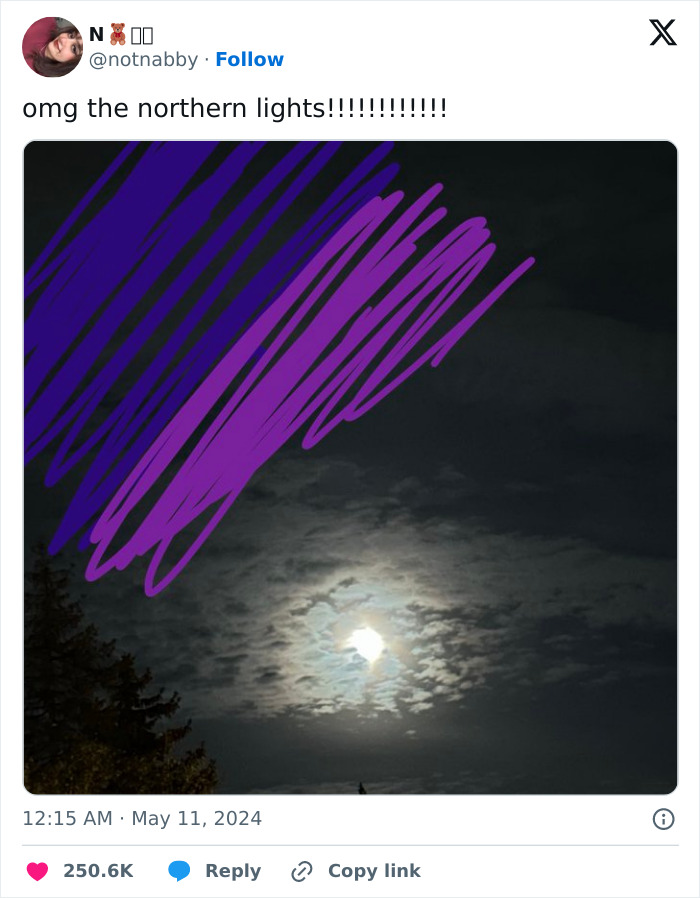
Image credits: notnabby
#6
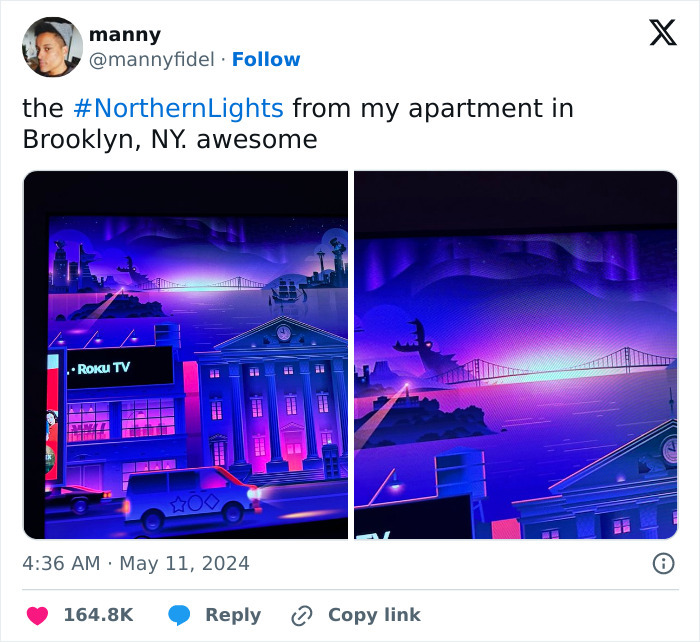
Image credits: mannyfidel
What was unusual about this aurora was that it was observed at even lower latitudes, even though it’s normally seen closer to the North or South Pole. Usually, the Earth’s magnetic field redirects the sun’s charged particles, which can cause the Northern Lights (aurora borealis) or the Southern Lights (aurora australis).
The National Oceanic and Atmospheric Administration (NOAA), which provides weather forecasts and severe storm warnings, informed people early on that they were expecting a severe geomagnetic storm. They classify these storms on a “G” scale of 1 (minor) to 5 (extreme) and this one was classified as a G4.
#7
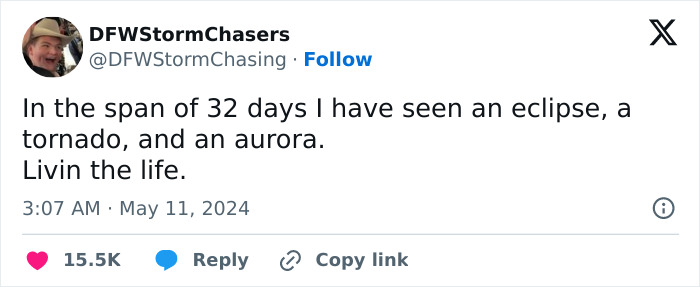
Image credits: DFWStormChasing
#8
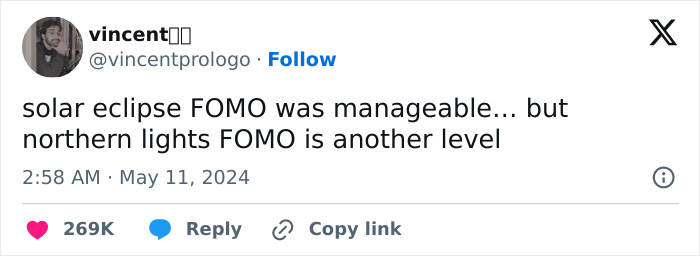
Image credits: vincentprologo
#9
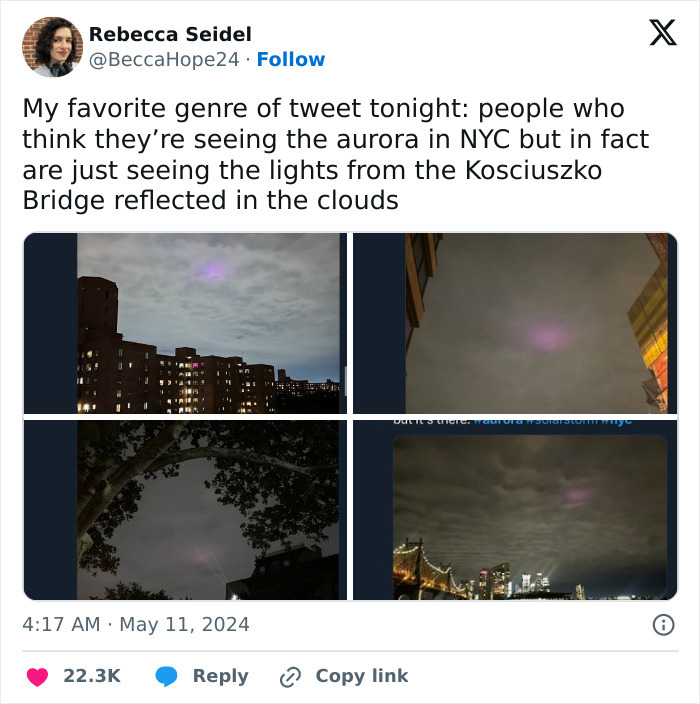
Image credits: BeccaHope24
This unique geomagnetic storm was caused by the sun’s solar maximum, which is the period during the solar cycle when you can witness the most solar activity. The solar maximum occurs every 11 years but can also happen every 14-15 years.
During this period, a large number of sunspots appear on the sun’s surface. Its magnetic field also flips completely, meaning that its North and South poles switch places. It takes another 11 years for them to flip back. Due to the sun’s high activity level and energetic magnetic field, people were lucky enough to witness the Northern lights.
#10
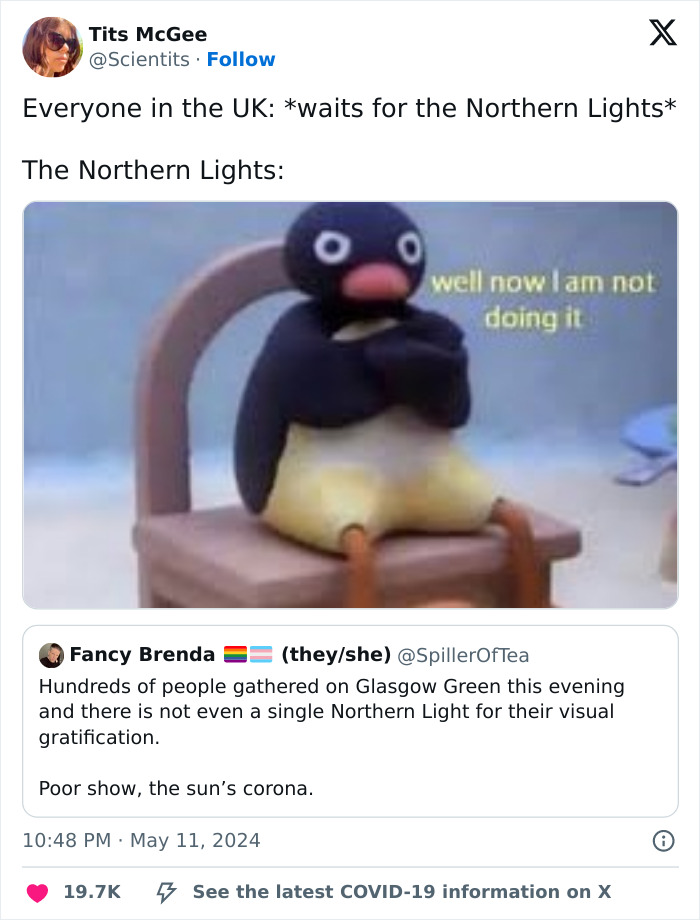
Image credits: Scientits
#11

Image credits: MichaelaOkla
#12
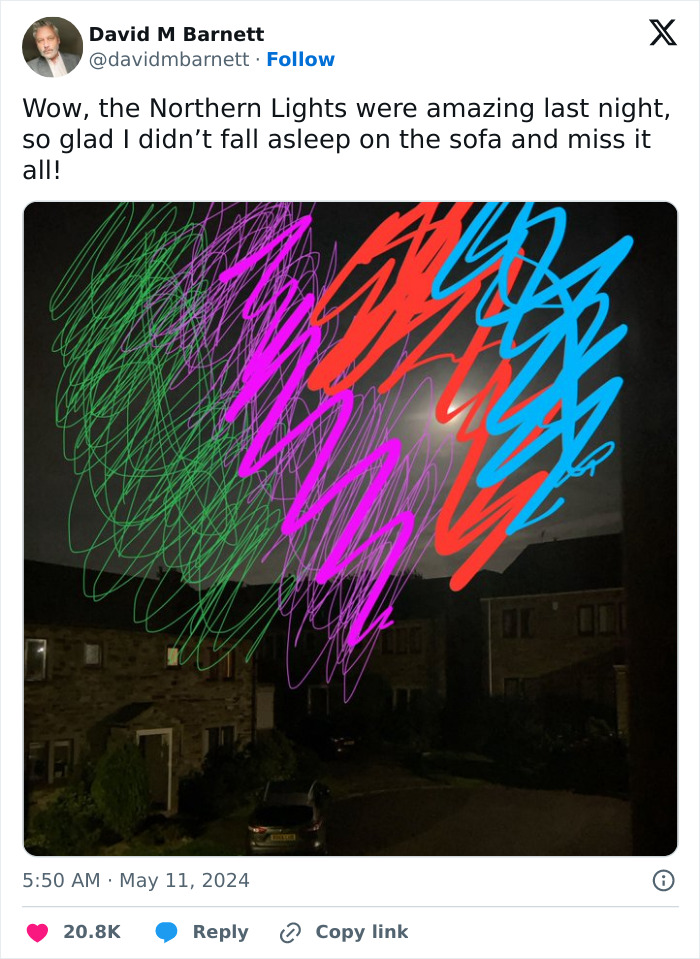
Image credits: davidmbarnett
Although this was labeled as a severe solar storm, the most intense one ever recorded happened in 1859. It affected telegraph systems around the world, literally causing shocks to operators and leading to equipment catching on fire. This was known as the Carrington Event.
If such an intense storm occurred today, its effect could be catastrophic because of our heavy dependence on electricity. A geomagnetic storm of such proportions can affect everyday electrical appliances, damage satellites orbiting around Earth by burning out their circuit boards, and disrupt GPS navigation systems.
#13
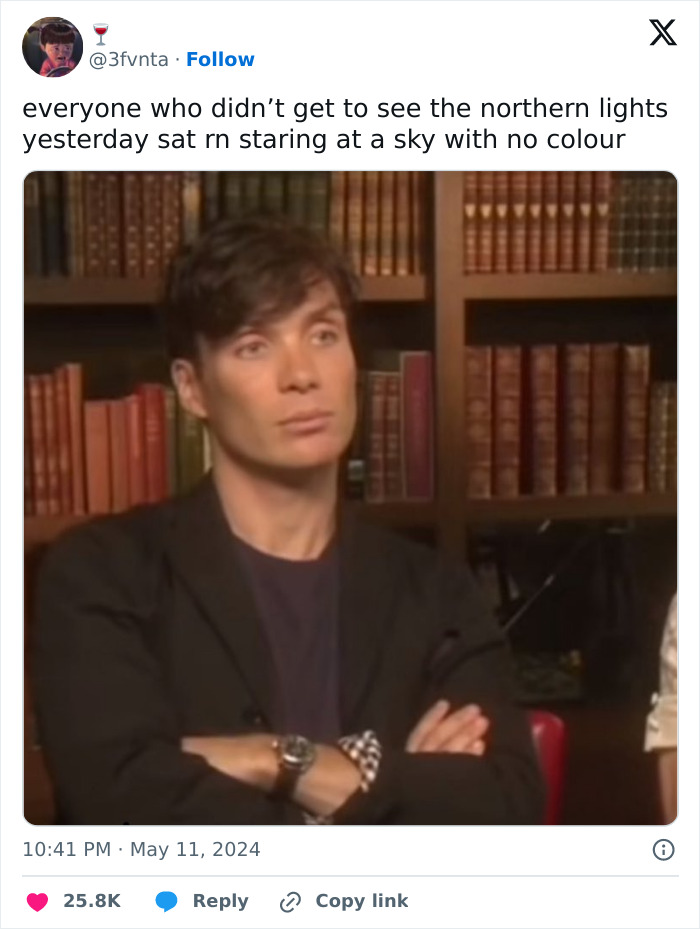
Image credits: 3fvnta
#14

Image credits: raulapaya
#15
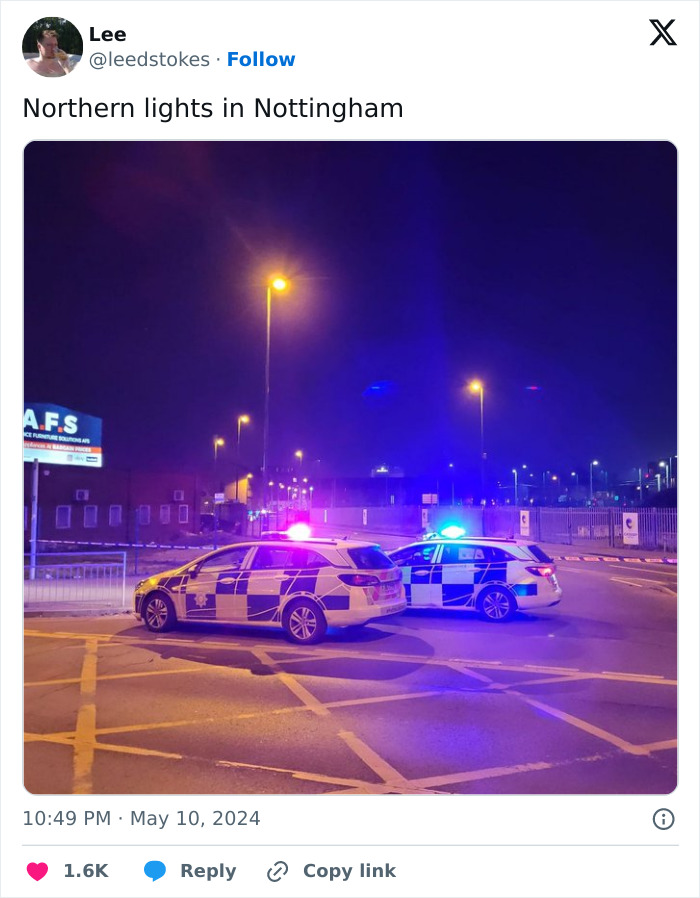
Image credits: leedstokes
Apart from the intensity of the geomagnetic storm, people were mesmerized by the beautiful colors of the aurora. The colors signify where in the atmosphere and with which gases the solar particles are interacting. An oxygen atom in the higher levels of the atmosphere may emit a red or blue color. Nitrogen in the lower levels of the atmosphere might appear green, blue, or pink.
#16

Image credits: AJamesMcCarthy
#17
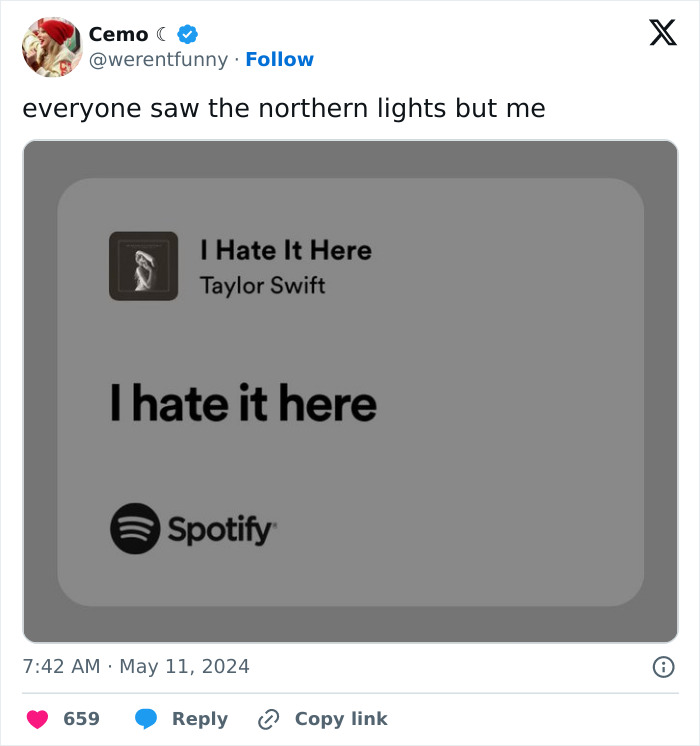
Image credits: werentfunny
#18
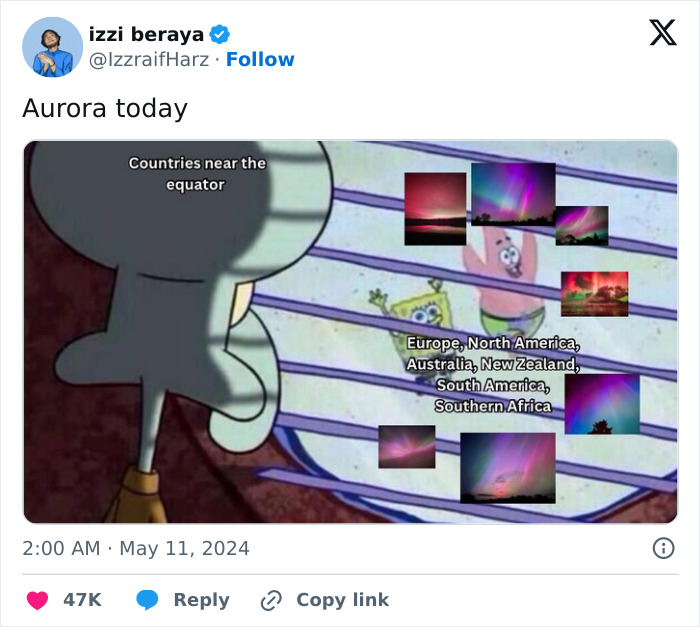
Image credits: IzzraifHarz
An interesting fact about auroras is that they have been observed on every planet in the solar system. Even Mercury, which has a nonexistent atmosphere, seems to have its own auroral processes. Although other planets have different atmospheres and magnetic fields compared to the Earth, they seem to produce a similar auroral effect. Around Jupiter, there are large electrical currents and bright ultraviolet (UV) aurora. There have been slightly weaker pink and purple auroras spotted around Saturn.
#19
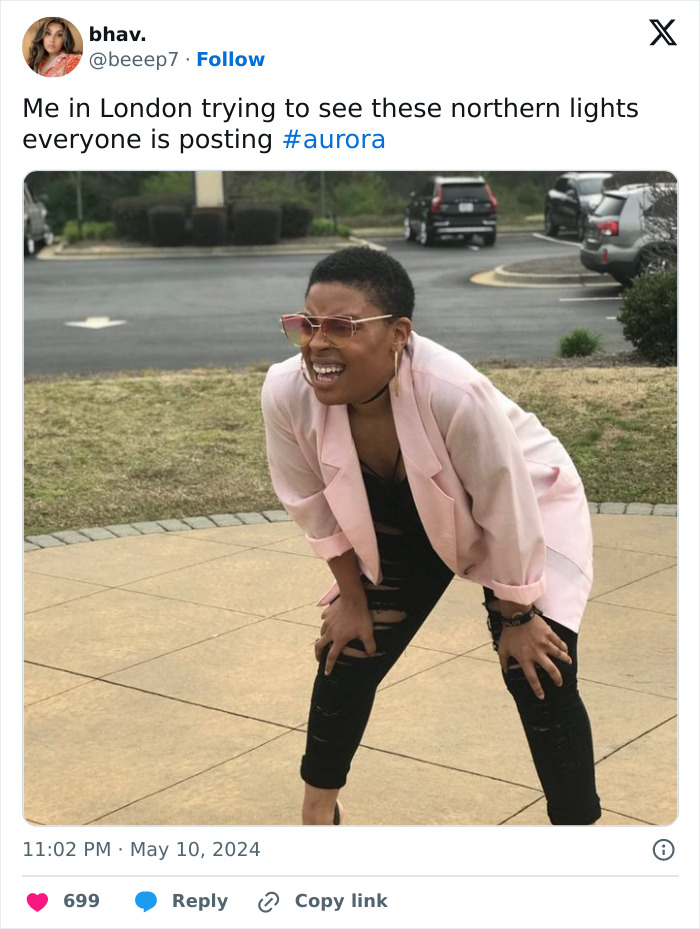
Image credits: beeep7
#20
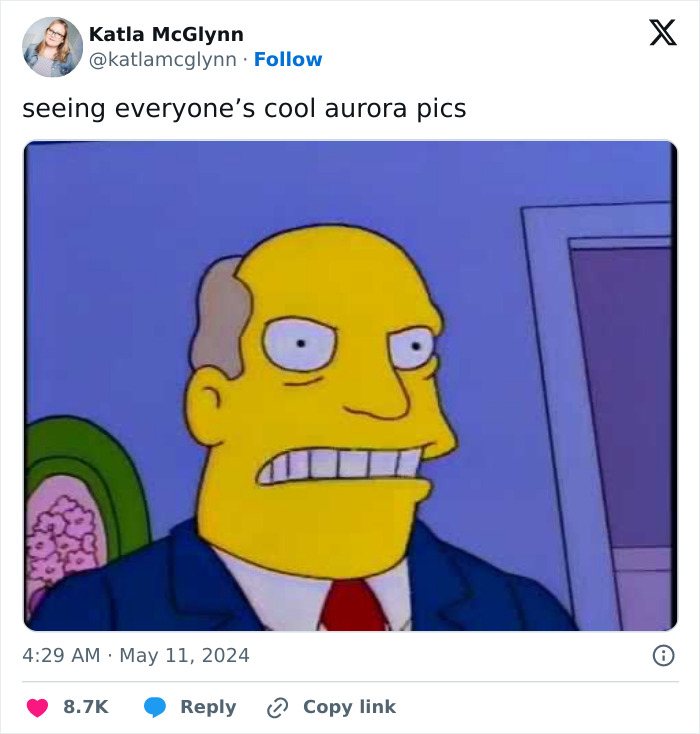
Image credits: katlamcglynn
#21
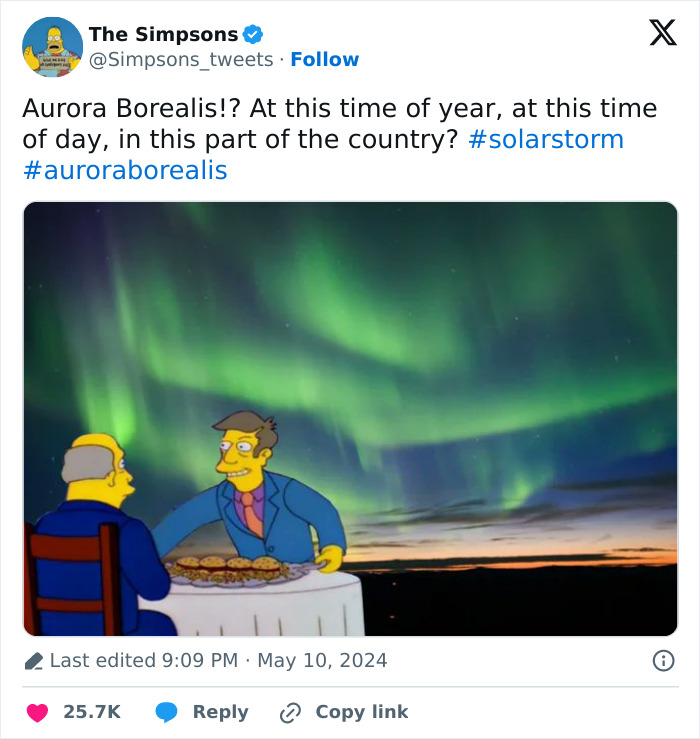
Image credits: Simpsons_tweets
It might be disappointing to have not witnessed the Northern lights in their full glory but that doesn’t mean you’ve missed your chance. The best place to see them during the year is an area within a 1,550-mile radius of the North Pole. It’s important to go during times of the year when it is dark enough, not between mid-April and early August when the midnight sun is out.
You can predict a strong aurora night by counting forward 27 days from the most recent occurrence. This is because auroras are strongly associated with sunspot activity, and as it takes 27 days for the sun to rotate on its axis, that’s how long it will take for an aurora-producing sunspot to show up again.
#22
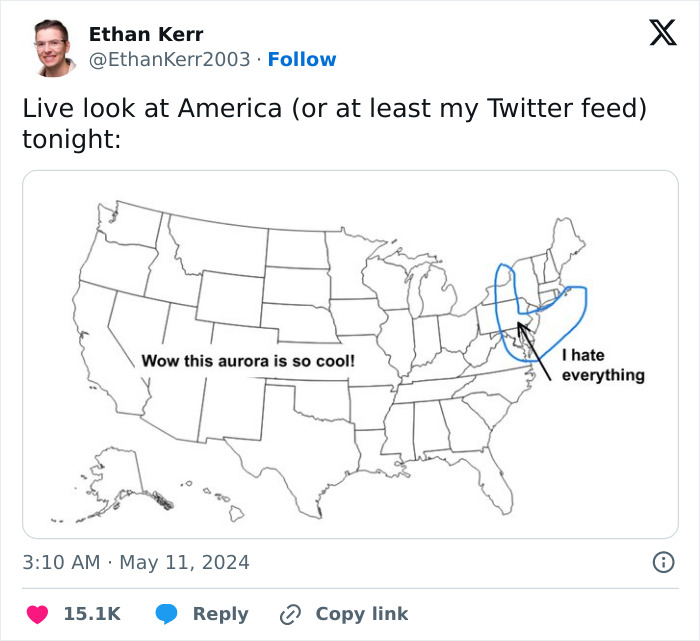
Image credits: EthanKerr2003
#23
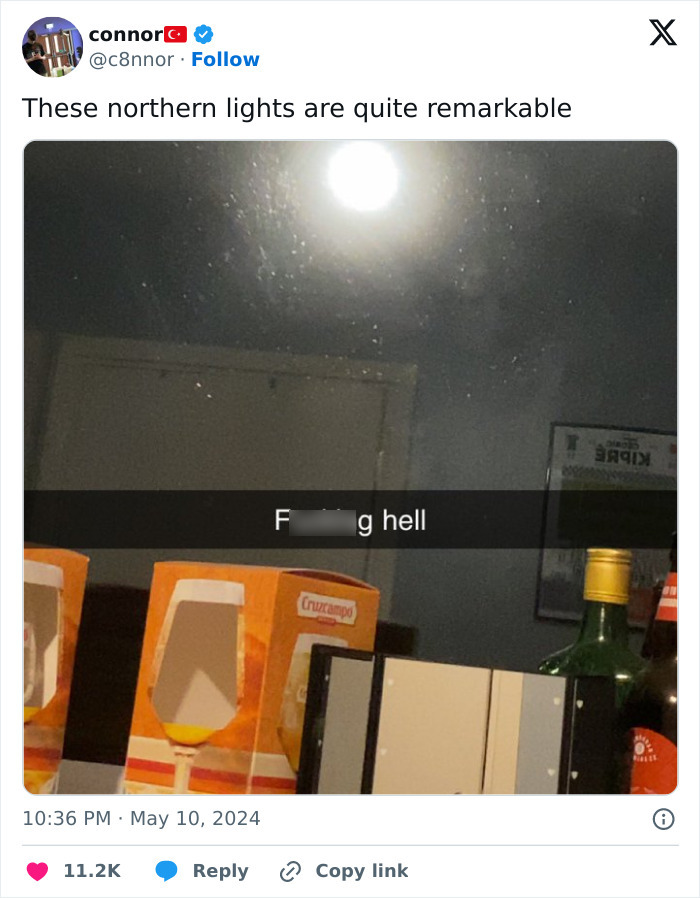
Image credits: c8nnor
#24
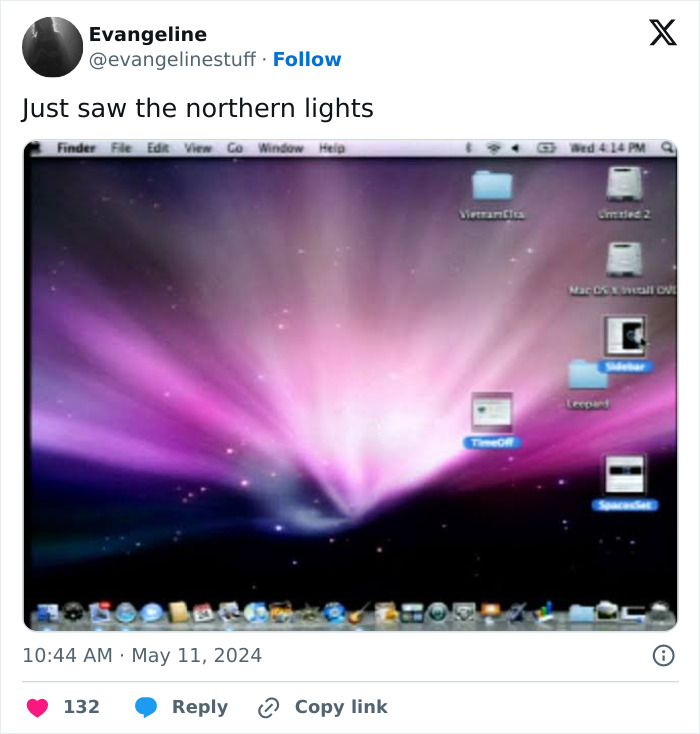
Image credits: evangelinestuff
The aurora borealis is a sight to remember and that’s why it’s on so many people’s bucket lists. People travel far and wide just to get a small glimpse of it. Once you do get a chance to see it, then you must share those pictures with us. Till then, enjoy these memes and let us know how you feel about missing out on the colorful action.
#25
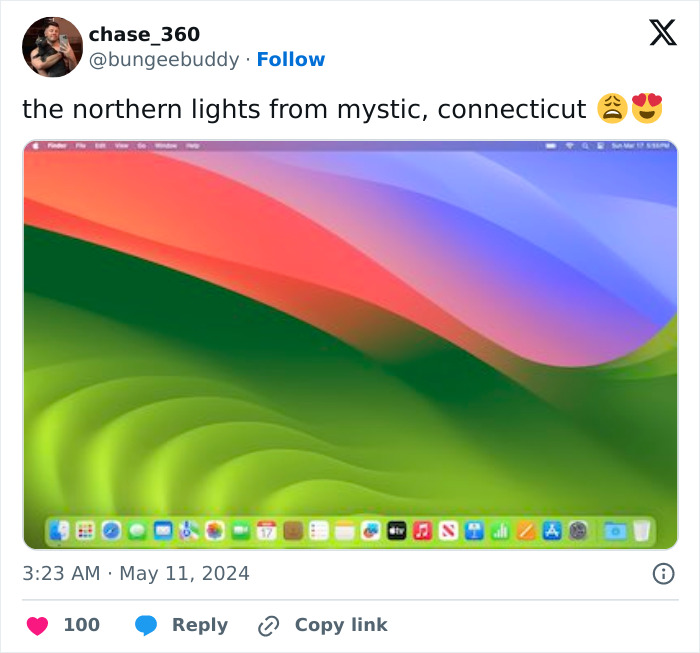
Image credits: bungeebuddy
#26
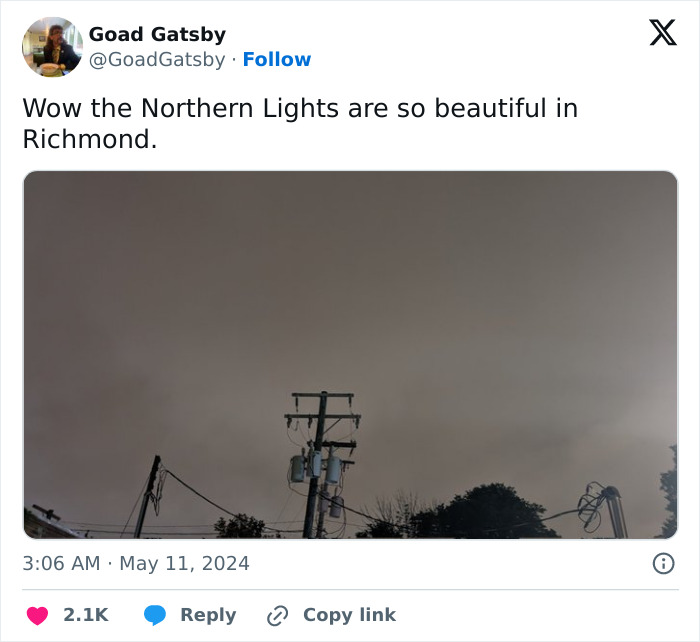
Image credits: GoadGatsby
#27

Image credits: sacha_coward
#28
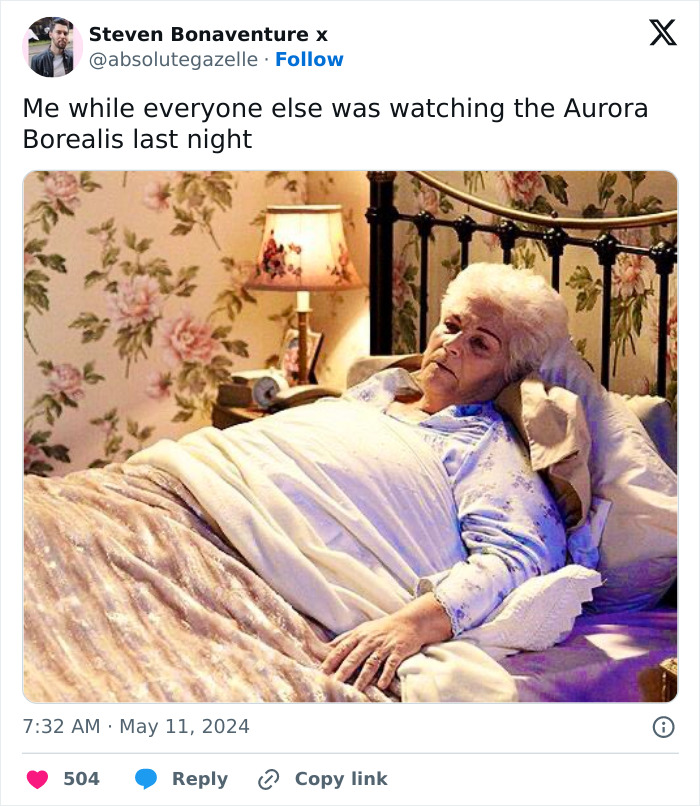
Image credits: absolutegazelle
#29
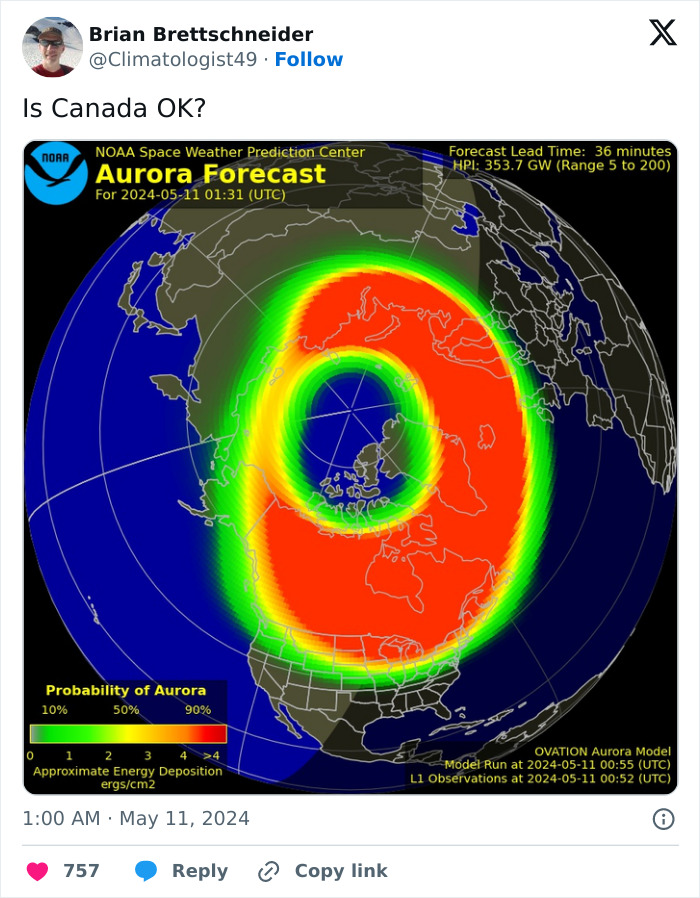
Image credits: Climatologist49
#30
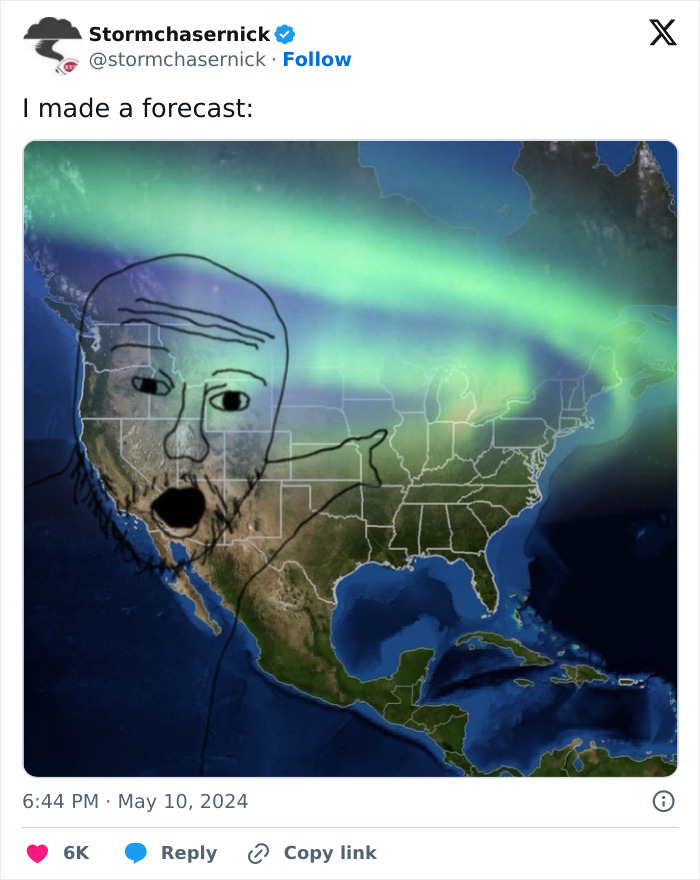
Image credits: stormchasernick
#31
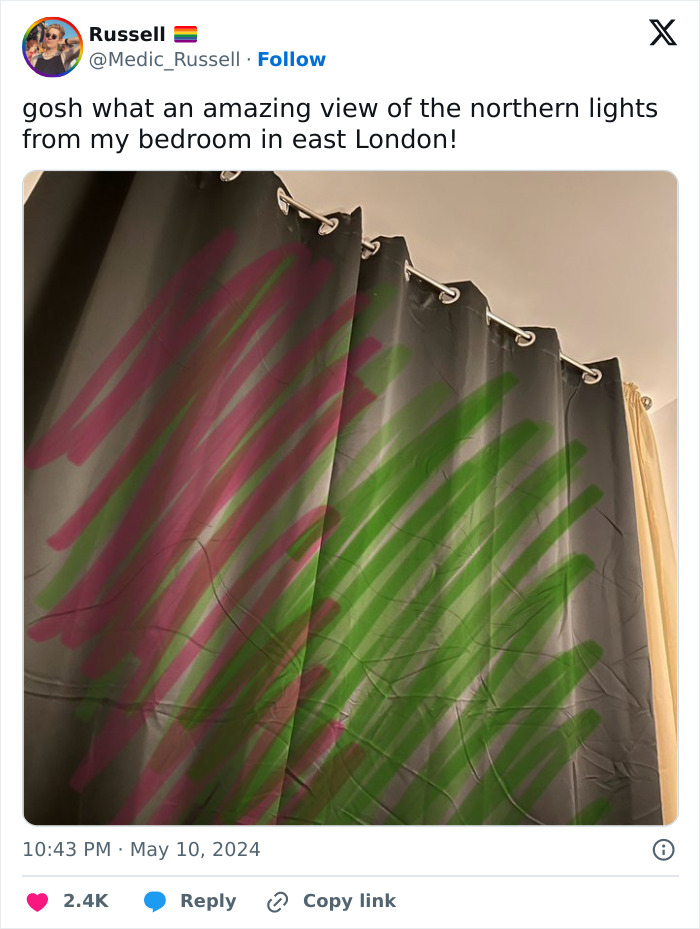
Image credits: Medic_Russell
#32
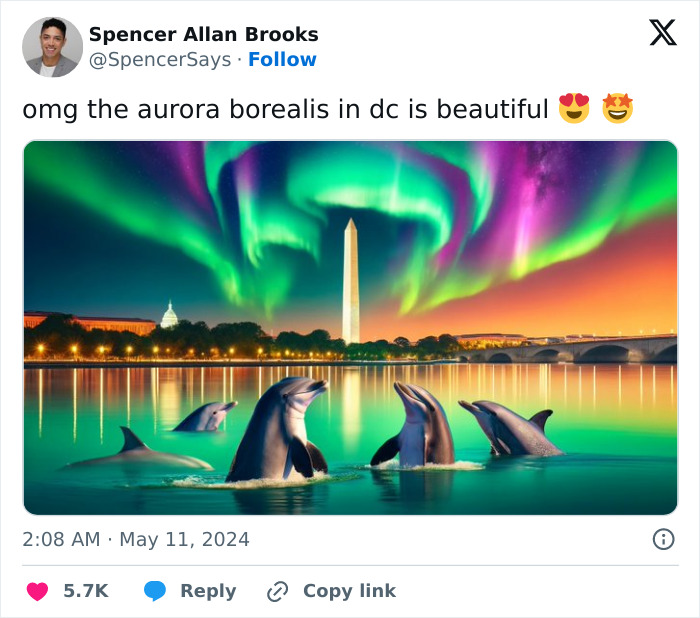
Image credits: SpencerSays
#33
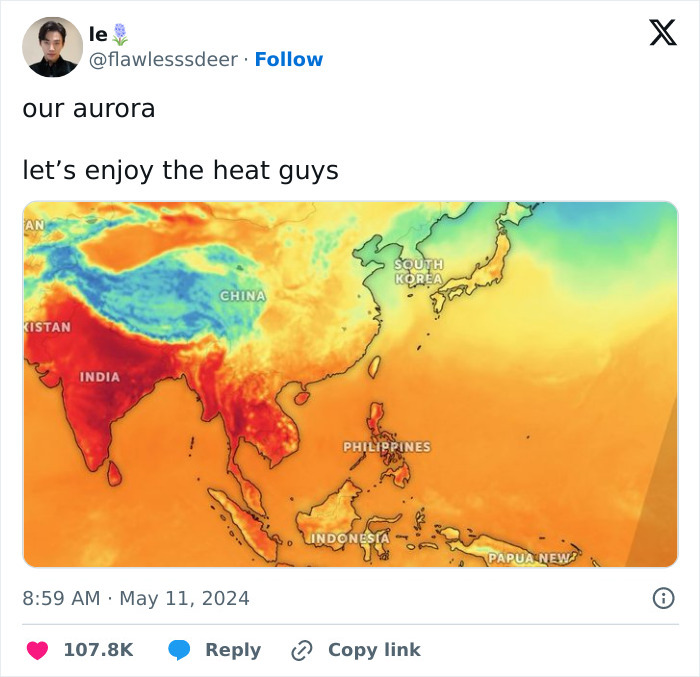
Image credits: flawlesssdeer
#34
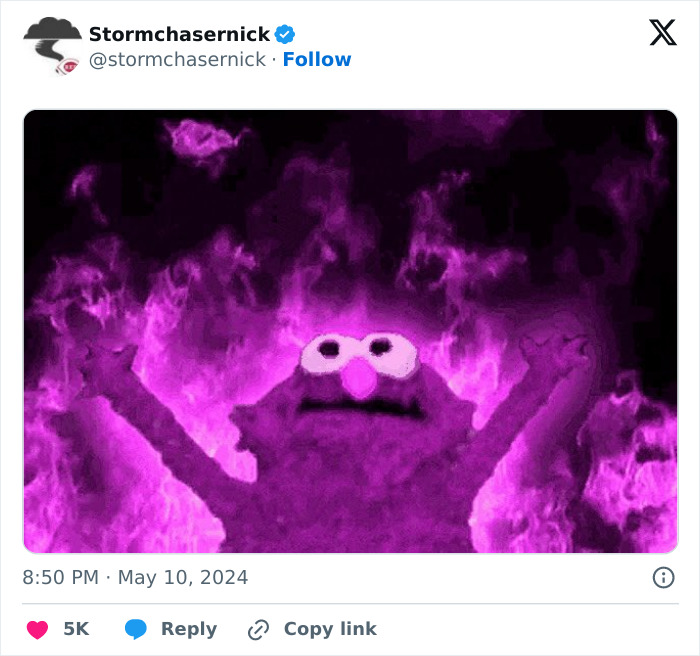
Image credits: stormchasernick
#35
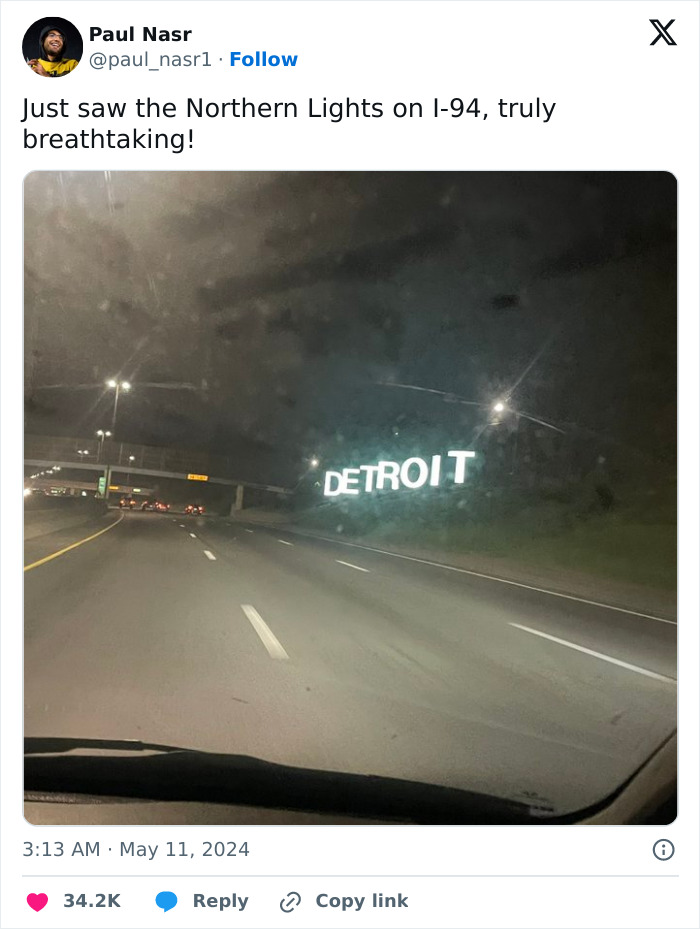
Image credits: paul_nasr1
#36
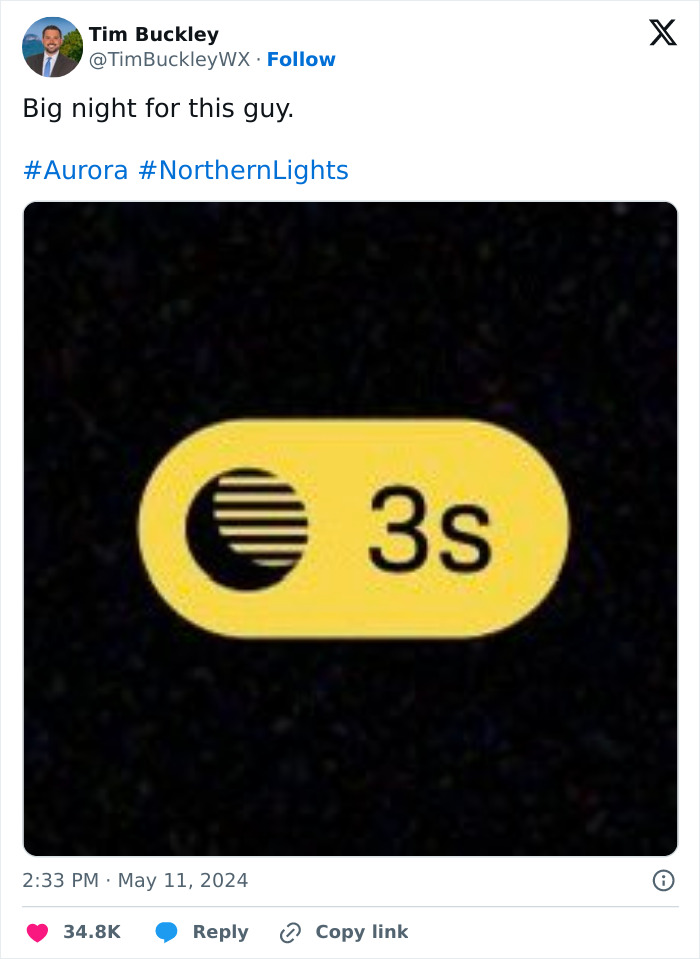
Image credits: TimBuckleyWX
#37
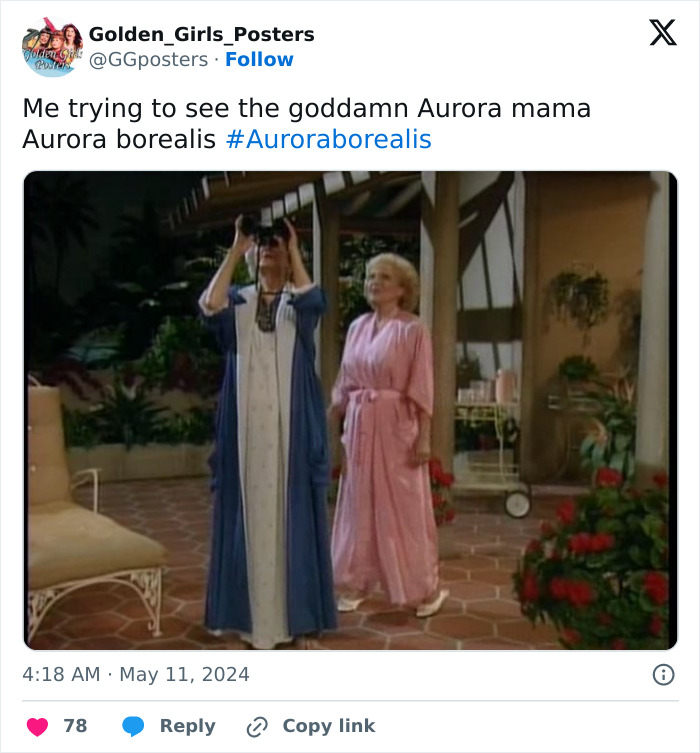
Image credits: GGposters
#38
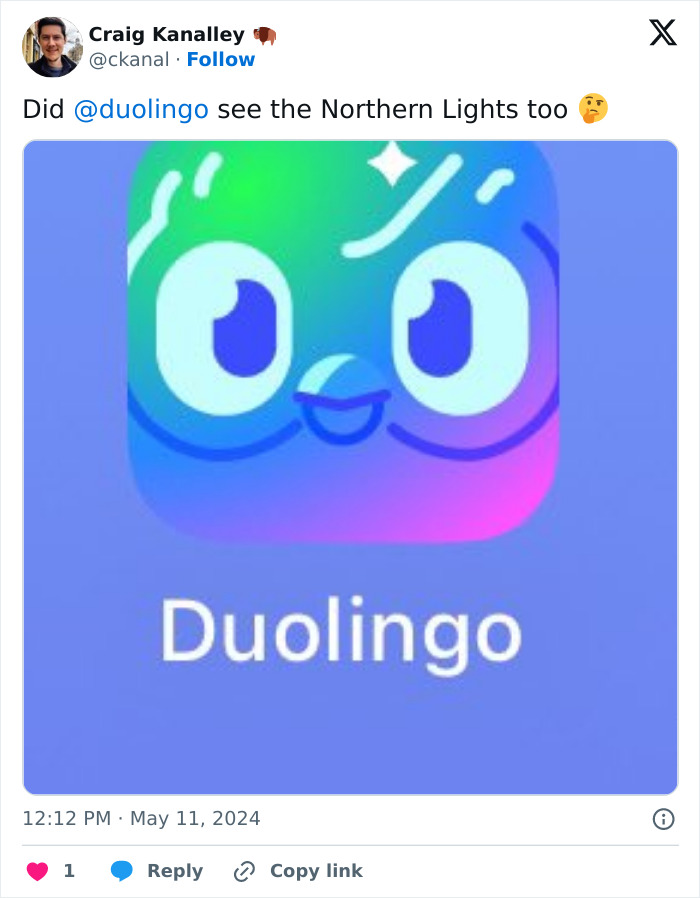
Image credits: ckanal







